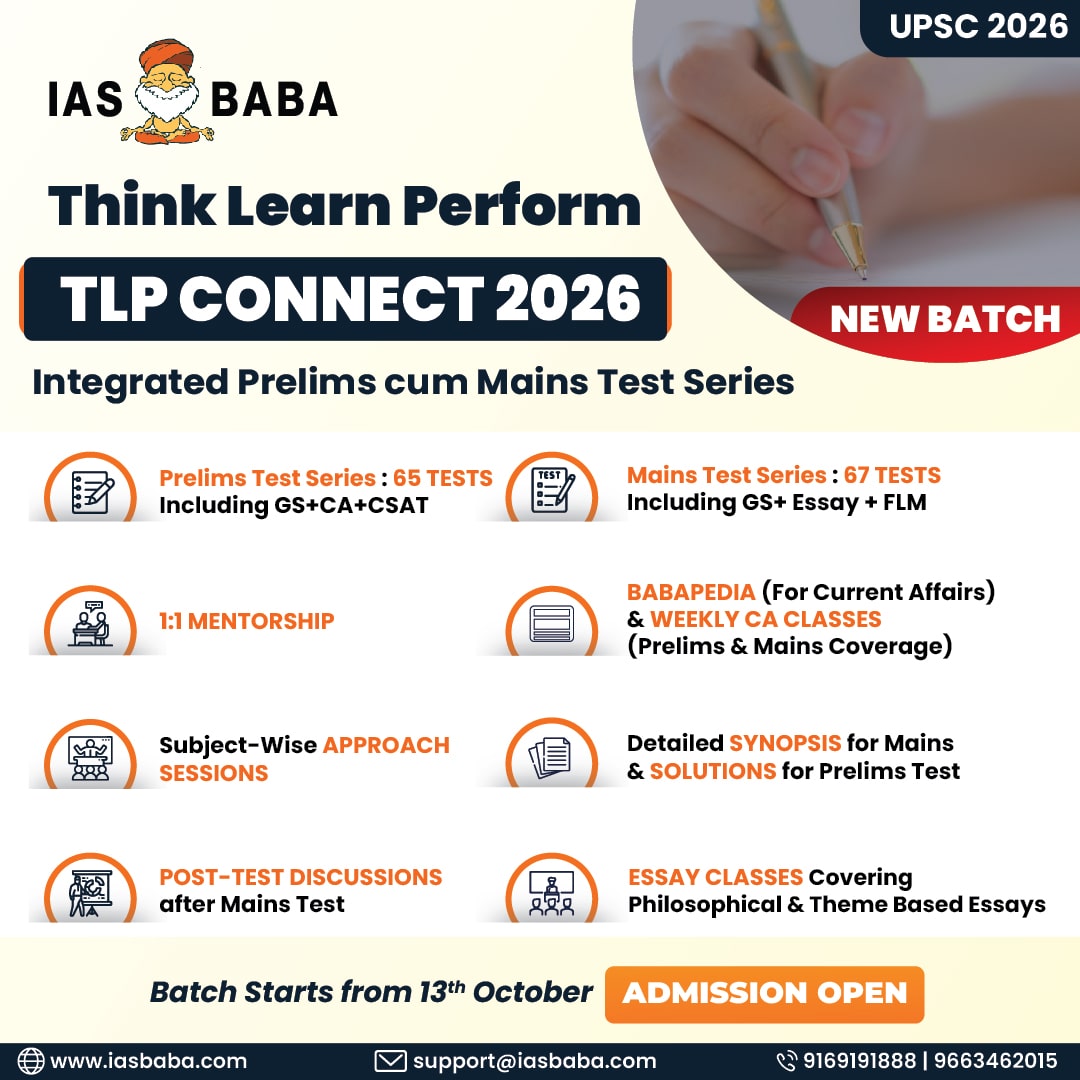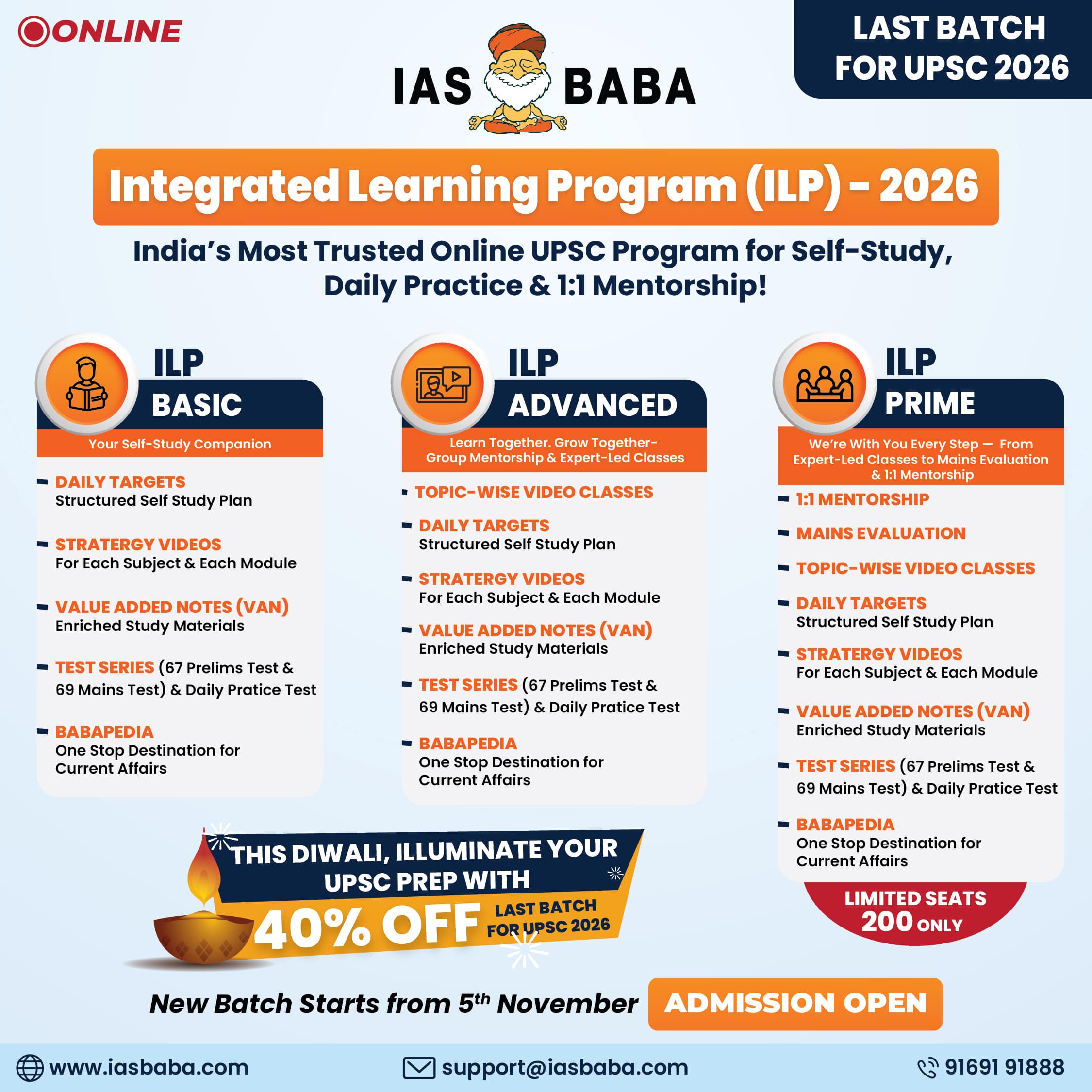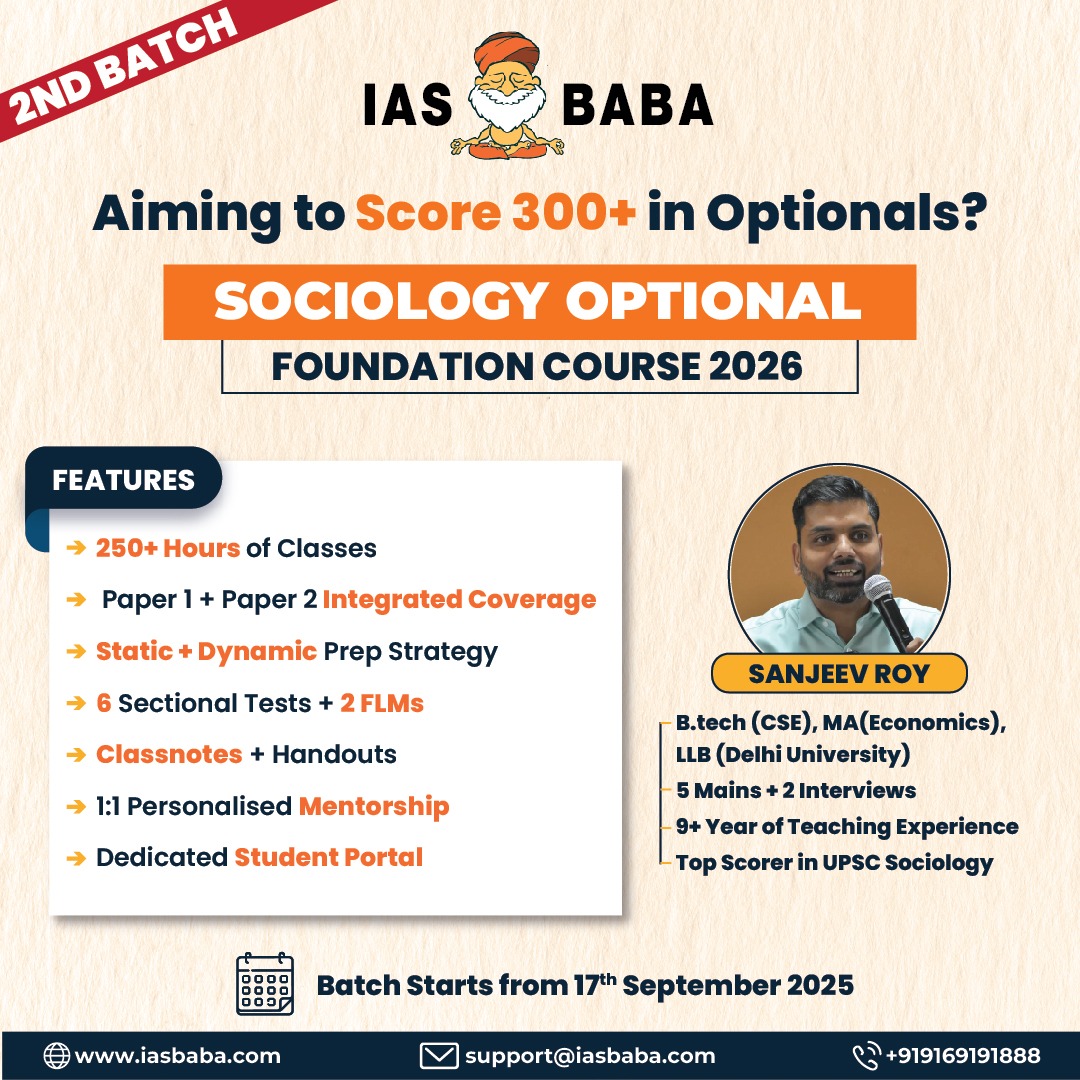IASbaba's Daily Current Affairs Analysis
rchives
(PRELIMS Focus)
Category: HEALTH
Context: A study in Nepal (2019–2023) has revealed that waning immunity against Japanese encephalitis virus (JEV) can worsen dengue infections.
Key Points:
- Severe Dengue: Prior JEV exposure, especially with mid-range antibody levels, increases dengue severity.
- Antibody-Dependent Enhancement: JEV antibodies may enhance, rather than block, dengue infection.
- High Co-Exposure: About 61% of dengue patients showed past JEV infection.
- Climate Factor: Rising temperatures and longer monsoons are expanding mosquito-borne disease risks.
- Way Forward: Timely JEV boosters, better diagnostics, and integrated disease management are recommended.
Learning Corner:
Japanese Encephalitis Virus (JEV):
- Classification: Flavivirus, genus Flavivirus, family Flaviviridae.
- Transmission: Mosquito-borne, primarily by Culex species (especially Culex tritaeniorhynchus).
- Reservoirs: Pigs and wading birds act as amplifying hosts; humans are incidental dead-end hosts.
- Epidemiology in India: Endemic in several states, especially in Bihar, Uttar Pradesh, Assam, West Bengal, and Tamil Nadu. Peaks during monsoon and post-monsoon due to mosquito breeding.
- Clinical features: Most infections are asymptomatic; severe cases present with fever, headache, vomiting, altered mental status, seizures, and may progress to encephalitis. Case fatality can reach 20–30%.
- Prevention: Vaccination (live attenuated SA 14-14-2 vaccine), vector control, and avoiding mosquito bites.
- Treatment: No specific antiviral therapy; supportive care is mainstay.
Source: THE HINDU
Category: HISTORY
Context : The book “Decolonial Historiography of Malabar’s Rebellion” by Ziya Us Salam offers a fresh view of the 1921–22 Malabar Revolt.
It emphasizes Hindu-Muslim collaboration in resisting British colonial rule, challenging its portrayal as merely a peasant uprising or communal clash. The revolt is framed as a complex anti-colonial struggle tied to both the Khilafat movement and local socio-economic grievances. The author highlights how the British used divide-and-rule tactics to weaken this unity and notes that post-Independence narratives largely ignored this shared resistance.
Learning Corner:
Mappilla Rebellion (or Malabar Rebellion), 1921
- Background: A series of uprisings by the Mappilla (Muslim) peasantry in the Malabar region of Kerala against British colonial authority and landlord (jenmi) exploitation.
- Causes:
- Economic exploitation – high rents and oppressive tenancy under Hindu landlords.
- Religious tension – communal polarization between Mappilla Muslims and Hindu landlords.
- Political influence – spread of Khilafat Movement and anti-colonial sentiment.
- Course: Began in 1921, marked by attacks on landlords, government officials, and police. The rebellion was initially anti-British but later took a communal turn, leading to widespread violence.
- Suppression: Brutally suppressed by the British army, involving mass killings, arrests, and destruction of villages.
- Significance:
- Highlighted agrarian distress and tenant issues in Malabar.
- Exposed the complex interplay of religion, economics, and politics in anti-colonial struggles.
- Led to the introduction of the Malabar Tenancy Act (1930) to protect tenants.
Source: THE HINDU
Category: ECONOMICS
Context: The US Federal Reserve cut interest rates by 0.25%, bringing the policy rate to 4.00–4.25%, its first reduction since December.
The move aims to support jobs amid slowing growth and easing inflation. The Fed signaled two more cuts could follow this year, though some policymakers opposed the move. New projections show slightly higher unemployment alongside better growth estimates. Wall Street reacted mixed at first, before turning positive.
Source: THE INDIAN EXPRESS
Category: SCIENCE AND TECHNOLOGY
Context : The Indian Army is upgrading its air defense with new radars to counter small, low-flying drones.
Triggered by incidents like Operation Sindoor, the plan includes 48 Low-Level Light Weight Radars (Enhanced), 30 Drone Radars, and 20 Advanced Drone Detection and Engagement Radars. These mobile systems can detect low Radar Cross Section targets such as drones, filling gaps left by older long-range radars. They will be integrated into India’s multi-layered air defense network managed through the IAF’s Integrated Air Command and Control System (IACCS).
Learning Corner:
Radar (Radio Detection and Ranging)
- Definition: Radar is an electronic system that uses radio waves to detect, track, and determine the distance, speed, and direction of objects.
- Working Principle: A radar system transmits radio signals; when these hit an object, they are reflected back. The time delay and frequency shift of the echo help calculate the target’s range, location, and velocity.
- Components:
- Transmitter (generates radio waves)
- Antenna (sends and receives signals)
- Receiver (detects returning signals)
- Display/Processing Unit (interprets data)
- Applications:
- Military: Air defense, surveillance, missile guidance, drone detection.
- Civil: Air traffic control, weather monitoring, navigation of ships and aircraft, speed detection by traffic police.
- Types of Radar:
- Continuous Wave (CW) Radar – measures velocity.
- Pulse Radar – measures range and position.
- Doppler Radar – detects speed and movement.
- Phased Array Radar – tracks multiple targets simultaneously.
- Limitations: Performance can be affected by terrain, stealth technology (low Radar Cross Section objects), and electronic countermeasures (jamming).
Source: THE INDIAN EXPRESS
Category: ENVIRONMENT
Context: National Policy on Geothermal Energy unveiled.
Key Highlights
- First-ever national framework for geothermal exploration, development, and utilization.
- Grants renewables-like incentives: must-run status, open access charge waivers, and grid access.
- Identifies 10 geothermal provinces and 381 hot springs with ~10 GW potential (Himalayas, Cambay, Aravalli, Godavari, Mahanadi etc.).
- Covers high-enthalpy (electricity), low/medium enthalpy (heating, cooling, agriculture, aquaculture, GSHPs), hybrid systems, and reuse of abandoned oil/gas wells.
- Streamlined regulatory setup: single-window clearances, long-term leases, centralized geothermal data.
Incentives & Financial Support
- 100% FDI permitted; concessional loans, risk-sharing for drilling, tax/GST relief, accelerated depreciation, viability gap funding.
- Participation in Indian Carbon Credit Trading Program encouraged.
Pilot Projects & Collaborations
- Five pilot projects sanctioned, incl. 450 kW plant in Rajasthan using abandoned oil wells.
- Partnerships with Iceland, Norway, and the U.S. for technology transfer.
- Push for local innovation, PPPs, and oil-gas repurposing.
Relevance to Net Zero 2070
- Reliable 24×7 clean power, critical for diversified renewable mix.
- Supports decarbonization in buildings, agriculture, tourism, and rural development.
Implementation
- Led by MNRE; states act as nodal agencies for clearances, project facilitation, and capacity building.
Significance: Positions geothermal as a mainstream renewable, boosting energy security, jobs, and climate goals.
Learning Corner:
Geothermal Energy
- Definition: Renewable energy derived from the natural heat of the Earth’s interior, stored in rocks, magma, hot water, and steam.
- Sources: Heat is tapped from geothermal reservoirs, hot springs, geysers, and deep wells.
- Applications:
- Electricity generation (high-enthalpy resources).
- Direct use in heating, cooling, aquaculture, greenhouses, and industry.
- Geothermal Heat Pumps (GSHPs) for space heating/cooling.
- Advantages:
- Clean, renewable, and sustainable.
- Available 24×7 (baseload power, unlike solar/wind).
- Low greenhouse gas emissions and land footprint.
- Challenges:
- High upfront drilling cost and geological risks.
- Location-specific potential (limited to tectonically active/hotspot areas).
- Risk of induced seismicity and water contamination if not managed well.
- Global Leaders: Iceland, USA, Philippines, Indonesia, and Kenya.
- India’s Potential: ~10 GW identified; major provinces include Himalayas, Cambay Basin, Aravalli, Godavari, and Mahanadi regions.
- Significance: Geothermal energy is a stable, round-the-clock renewable source crucial for clean energy transition and achieving climate goals.
Source: PIB
(MAINS Focus)
Introduction (Context)
Water is fundamental to human survival and development, sustaining not only life and health but also agriculture, industry and ecosystems. Yet despite its centrality, water is becoming increasingly scarce.
India, supports nearly 18 per cent of the world’s population with only 4 per cent of global freshwater resources, facing acute stress on its water systems.
Hereby, discussing how an integrated approach, combining advanced technologies, promotion of water reuse, and enforcing strong regulation, offers a sustainable path forward.
Sources of Wastewater
Domestic Sewage
- It forms the largest share of untreated waste and often flows untreated into rivers and lakes.
- For instance, the Yamuna receives around 641 million litres of untreated sewage every day, leaving the river ecologically dead.
Industries
- A major share also comes from industrial effluents, with data showing over 3,500 highly polluting industries discharging wastewater into rivers.
- The Ganga basin is especially affected, with tanneries in Kanpur and distilleries in Bihar being prominent contributors.
- These effluents frequently contain toxic chemicals, heavy metals, and dyes, creating severe long-term risks for ecosystems and human health.
Agriculture
- Agricultural run-off is carrying excess nitrogen and phosphorus into water bodies, which causes eutrophication or nutrient enrichment. This disrupts aquatic life and reduces fish populations.
- For example, Vembanad Lake in Kerala, a Ramsar site, has suffered from nutrient pollution leading to a sharp decline in fish catch and overall ecological imbalance.
Impact on Health
- Consumption and use of polluted water are among the leading causes of waterborne illnesses such as diarrhoea, cholera, and dysentery.
- Contaminated water has also been associated with the growing problem of antimicrobial resistance, making treatment of infections more difficult.
- Each year, nearly 38 million people in India are affected by water-related diseases.
- Beyond health impacts, poor water quality raises the cost of providing safe drinking water and undermines livelihoods that rely on clean water resources, including fisheries and tourism.
Legal and Institutional framework
The legal and institutional measures for wastewater management are:
- The Water (Prevention and Control of Pollution) Act, 1974 marked the first major step, establishing the Central and State Pollution Control Boards with powers to set discharge standards, monitor compliance, and take corrective action when required.
- The Central Pollution Control Board (CPCB) plays a pivotal role by framing guidelines for sewage and industrial effluent treatment and by identifying critically polluted river stretches needing urgent attention.
- The National Water Policy, 2012 underlined the importance of integrated water resources management and specifically highlighted wastewater recycling and reuse as vital for long-term water sustainability.
- To address river pollution, major interventions like the National Mission for Clean Ganga (Namami Gange) and other river rejuvenation programmes were launched to restore heavily polluted stretches.
- Urban missions such as Swachh Bharat Abhiyan, AMRUT, and Smart Cities Mission also integrate wastewater management, focusing on creating sewage treatment infrastructure, promoting reuse, and improving community and institutional participation.
Gaps and Challenges
- Weak enforcement of existing rules continues to undermine progress.
- Many sewage treatment plants suffer from poor operation and maintenance, limiting their effectiveness.
- Fragmented governance across multiple agencies reduces accountability and coordination.
- Only 11 out of 28 states have formulated wastewater reuse policies, and most lack concrete implementation strategies or roadmaps.
Draft Liquid Waste Management Rules, 2024
- Recently, the government introduced the Draft Liquid Waste Management Rules, 2024 under the Environment Protection Act, 1986.
- The draft rules propose measures to reduce wastewater generation at source, establish proper collection and treatment systems, and promote the reuse of treated effluent and sludge.
- They reflect a shift towards a circular economy model, where wastewater is seen as a resource instead of a burden.
- For these rules to deliver, India will require greater institutional capacity, sustainable financing mechanisms, and robust monitoring frameworks to ensure compliance.
Evolving Technological Interventions
Activated Sludge Process (ASP)
- It is an aerobic treatment method where microorganisms such as bacteria, fungi, and algae break down organic matter and suspended solids.
- Helps in significantly reducing pollutants from wastewater.
- Limitations include high energy consumption, need for skilled maintenance, and operational costs, which make it less viable in resource-constrained settings.
Sequential Batch Reactor (SBR)
- An advanced system that treats wastewater in batch cycles through filling, aeration, settling, and decanting phases.
- Known for flexibility and efficiency, making it a preferred choice in urban sewage treatment.
- Requires continuous monitoring and technical expertise for effective operation.
Up-flow Anaerobic Sludge Blanket (UASB)
- It is a low-cost and energy-efficient process where wastewater flows upward through a blanket of anaerobic microorganisms.
- Produces biogas as a by-product, adding to its economic value.
- Challenges include large land requirements and limited effectiveness in treating complex industrial effluents.
Membrane Bioreactor (MBR)
- It combines conventional biological treatment with advanced membrane filtration, producing high-quality treated water.
- Suitable for reuse in industrial processes and non-potable applications such as landscaping and cooling.
- Adoption is restricted due to high installation and operational costs, making it more feasible in industrial hubs and high-value urban projects.
Nanotechnology-based solutions
- Techniques such as nanofiltration show promise in removing a wider range of contaminants and improving overall treatment efficiency.
- Still at an experimental stage in India, with potential for future large-scale application once costs reduce and technology matures.
Way forward
- Advanced technologies such as Sequential Batch Reactors (SBRs) and Membrane Bioreactors (MBRs) are effective in delivering high-quality treated water, but their wider adoption must be aligned with India’s financial capacities and infrastructural gaps.
- Public-private partnerships can play a decisive role in mobilising funds and ensuring efficient operation of large-scale treatment facilities.
- Alongside high-end technologies, low-cost and decentralised options like wetlands, waste stabilisation ponds, and localised treatment plants can provide affordable solutions, especially in rural and peri-urban regions.
- Building awareness and public confidence in the safe application of treated wastewater is crucial, particularly for agriculture and non-potable uses, where social acceptance remains a barrier.
- A comprehensive approach that integrates strong regulation, adoption of appropriate technologies, decentralised solutions, and promotion of reuse is essential to transform wastewater management into a resource recovery strategy for India’s long-term water security.
Conclusion
Wastewater management is not merely an environmental obligation but a strategic solution to India’s water crisis. By combining strong regulation, advanced treatment technologies, decentralised solutions, and public awareness, India can transform wastewater into a reliable resource for agriculture, industry, and urban needs, ensuring water security for the future.
Mains Practice Question
Q Effective wastewater management is key to resolving India’s water scarcity challenge.” Discuss. (250 words, 15 marks)
Introduction (Context)
The Supreme Court has recently fixed a time limit of three months for Governors and the President of India to take a decision on Bills presented for assent.
This intervention came in the backdrop of Governors delaying action on State Bills for years, creating legislative deadlock and friction between the elected government and the constitutional head.
Governor’s Role under Article 200
- When a Bill passed by the State legislature is presented to the Governor, he has four options:
-
- Give assent (approve the Bill).
- Withhold assent (reject the Bill)
- Return the Bill to the Assembly for reconsideration (only once).
- Reserve the Bill for the consideration of the President.
- The Governor of a State is required to act on the aid and advice of the Council of Ministers headed by the Chief Minister.
- This ensures that the real executive power lies with the elected government, not with the Governor.
- The Constitution does not fix a time limit for action.
- Example: In 2023, the Punjab Governor delayed assent to several Bills, leading to a dispute that reached the Supreme Court.
Article 163
- The discretionary power of the Governor of an Indian state is primarily defined under Article 163 of the Indian Constitution.
- This article states that the Governor acts with the aid and advice of the Council of Ministers, except in cases where the Constitution requires the Governor to exercise functions in their discretion.
- This “situational discretion” allows the Governor to act independently in specific matters not requiring ministerial advice.
- These powers are limited and exceptional, not the norm.
Examples of Discretionary Powers:
- Reserving a Bill for the consideration of the President (Article 200).
- Recommending President’s Rule under Article 356 when the State government cannot function as per the Constitution
- Choosing a Chief Minister when no party has a clear majority in the State Assembly.
- Dismissing a government if it loses majority but refuses to resign.
Judicial Interpretation
- In Shamsher Singh vs State of Punjab (1974), the Supreme Court held that the Governor is only a constitutional head and can act independently only in specific situations provided by the Constitution.
- In Nabam Rebia (2016), the Court again stressed that the Governor cannot act as an independent authority except in express discretionary areas.
Expert Views
Sarkaria Commission
- The Sarkaria Commission stated that under Article 200, the Governor should normally act on the advice of the Council of Ministers.
- However, in rare and exceptional cases, such as when a Bill is patently unconstitutional, the Governor may exercise discretion.
- Judicial opinions in India have been divided on the extent of this discretion.
D.D. Basu
- A noted constitutional expert explained that in the United Kingdom, the sovereign has no independent power to withhold assent to a Bill without ministerial advice.
- In India, the Constitution deliberately omitted the phrase “in his discretion” while drafting Article 200
- This omission shows that the framers intended the Governor to act only on ministerial advice and not use discretion while dealing with Bills passed by the legislature.
Recent judgments
- In State of Tamil Nadu vs Governor of Tamil Nadu (2025), the Supreme Court rejected the idea that the Governor has full discretion to withhold assent or reserve a Bill for the President.
- The Court observed that giving such unchecked power would make the Governor a “super-constitutional authority” who could block the entire legislative process of the State.
- It clarified that the Governor must act on the aid and advice of the Council of Ministers, not independently, in such matters.
- Earlier, in State of Punjab vs Principal Secretary to the Governor (2023), the Court criticised Governors for delaying Bills indefinitely, stressing that this undermines democracy and disrupts governance.
Arguments for Time Limit
- The Constitution (Articles 200 and 201) does not fix any deadline, so Governors have sometimes kept Bills pending for many years without action.
- This delay blocks the law-making process and weakens the authority of the elected State legislature.
- The Constitution expects the Governor to make a decision (approve, reject, return, or reserve for the President) and not remain inactive.
- Article 355 says the Union must ensure States are run as per the Constitution, but when Governors delay Bills, this duty is not being met.
- Since the Union Government never acted to correct this, the Supreme Court had to step in and set a time limit.
Way Forward
- Fixing a reasonable time limit (three months) ensures accountability and prevents misuse of constitutional silence.
- The Union Government can creatively use Article 355 to direct Governors to discharge their duties without delay.
- Parliament may consider codifying timelines through legislation to avoid future disputes.
- Governors must adopt a neutral constitutional role and not function as political gatekeepers.
- Strengthening conventions and Centre–State cooperation will reduce friction over gubernatorial powers.
Conclusion
The Supreme Court’s decision to fix a time limit for Governors and the President to act on Bills ensures that the legislative process is not unnecessarily delayed. It reinforces the principle that the Governor is a constitutional head who must act on the aid and advice of the elected government, except in rare cases of discretion.
Mains Practice Question
Q Should there be a time limit for the Governor to approve or reject State Bills? Explain. 250 words, 15 marks)














